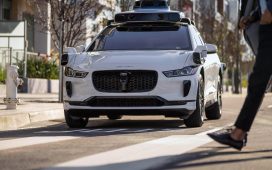Maryland’s Electric Future Uncertain Amid Executive Order
The future of Maryland’s electric vehicle (EV) initiatives hangs in the balance following a recent executive order, which has introduced significant uncertainty into the state’s clean cars program. Legislators convened to discuss the implications of this order, emphasizing the need for ongoing vigilance as legal proceedings unfold.
State officials highlighted that Maryland currently offers a range of incentives for EV adoption, such as rebates and tax credits. Despite the obstacles presented by the executive order, the Maryland Zero Emission Vehicle Infrastructure Plan remains on target to reach its goals, reflecting the commitment towards cleaner air and job creation in the clean energy sector.
Recent statistics show that nearly 127,000 electric vehicles are registered within the state, with a goal of achieving 43% electric vehicles by 2027. However, the infrastructure supporting this transition, featuring over 1,600 charging stations, faces scrutiny; around 30% of these stations are non-operational.
Opposing voices from the Maryland Freedom Caucus have dismissed the state’s EV goals as unattainable, criticizing the effectiveness of the charging network and labeling EVs as a financial strain on families. In response, the current administration firmly maintained that electric vehicles utilize less than 1% of Maryland’s electricity, underscoring that these alternatives can provide residents with more choices.
Moving forward, the governor is determined to persist with the program, with more comprehensive plans set to be unveiled later this year.
The Larger Implications of Maryland’s Electric Future
As Maryland grapples with the ramifications of the recent executive order impacting its electric vehicle (EV) initiatives, the stakes extend well beyond state borders, touching upon critical societal and global economic elements. The push towards EV adoption aligns with broader global trends aimed at reducing carbon emissions and combating climate change, a common concern for many nations. Maryland’s commitment to achieving 43% electric vehicles by 2027 can serve as a model for other states, influencing national policies surrounding clean energy.
However, the obstacles facing Maryland’s EV infrastructure highlight a starker reality: the ongoing challenge of transitioning to a sustainable energy economy. Notably, the fact that nearly 30% of the state’s charging stations are currently non-operational underscores the urgent need for investment in reliable infrastructure. This inability to meet demand can stymie consumer confidence and worsen public perception of EVs as practical alternatives, potentially leading to sluggish adoption rates.
The environmental implications are profound. If Maryland succeeds in its ambitious goals, it not only enhances local air quality but also contributes to global efforts in greenhouse gas reduction. Looking ahead, successful implementation might inspire similar initiatives in other regions, emphasizing the feasibility of large-scale EV integration.
Long-term significance also lies in job creation within the clean energy sector. As the state expands its EV infrastructure, job opportunities in manufacturing, installation, and maintenance could emerge, bolstering economic resilience in the face of traditional automotive industry declines. In navigating these challenges and opportunities, Maryland’s journey could redefine regional energy policies and contribute to a more sustainable future for all.
Is Maryland’s Electric Vehicle Dream in Jeopardy? Examining the Future of EV Initiatives
Unpacking Maryland’s Electric Vehicle Landscape
Maryland’s electric vehicle (EV) initiatives face a pivotal moment following a recent executive order that has caused considerable uncertainty regarding the state’s clean cars agenda. As discussions intensify among lawmakers and stakeholders, key aspects of Maryland’s EV program warrant a closer inspection.
Current Status of EV Adoption in Maryland
Maryland has made strides toward promoting electric vehicle usage, with nearly 127,000 EVs registered as of now. The state aims to achieve an ambitious target of 43% electric vehicles on the road by 2027, indicating a strong commitment to transition towards sustainable transportation.
# Incentives for Electric Vehicle Adoption
The Maryland government currently provides various incentives to encourage EV adoption, including:
– Rebates: Financial incentives for new EV purchases.
– Tax Credits: Reductions in state taxes for EV owners.
– Infrastructure Investments: Ongoing development of charging stations to support EV owners.
Electric Vehicle Infrastructure Challenges
Despite these efforts, the infrastructure supporting electric vehicles in Maryland presents several challenges. There are over 1,600 charging stations throughout the state; however, approximately 30% of these stations are currently non-operational. This raises concerns about the reliability of the charging network, which is critical for both potential and current EV users.
Addressing Opposition and Misconceptions
While some groups, such as the Maryland Freedom Caucus, criticize the state’s EV goals as unrealistic and unsustainable, state officials contend that electric vehicles consume less than 1% of Maryland’s total electricity. Proponents argue that transitioning to electric vehicles not only helps in reducing greenhouse gas emissions but also provides consumers with additional choices in their transportation options.
Future Plans and Innovations
The Maryland administration is poised to further enhance its electric vehicle strategy and is expected to announce more comprehensive plans later this year. Emphasis will likely be placed on:
– Improving Infrastructure: Strategies to repair and enhance the reliability of charging stations will be crucial.
– Expanding Incentives: To increase EV adoption rates among residents, additional financial incentives may be introduced.
– Sustainable Energy Sources: Efforts to integrate renewable energy sources into the charging network to ensure that EVs contribute to further reducing carbon emissions.
Market Trends and Insights
As the electric vehicle market continues to grow, it is essential to observe the following trends that may impact Maryland’s EV initiatives:
– Advancements in Battery Technology: Ongoing innovations in battery technology could reduce costs and improve EV efficiency.
– Public Sentiment: As concerns about climate change increase, public interest in sustainable transportation options, including EVs, is growing.
– Federal Support: Potential federal incentives and support for clean energy initiatives could play a crucial role in bolstering Maryland’s EV objectives.
Conclusion: The Path Ahead
The future of electric vehicles in Maryland is still unfolding, with significant efforts required to overcome current challenges. While the recent executive order brings uncertainty, state officials are committed to pursuing their clean energy goals. As Maryland navigates this complex landscape, monitoring the developments in both EV technology and infrastructure will be critical.
For more information on electric vehicles and related initiatives, visit Maryland.gov.









